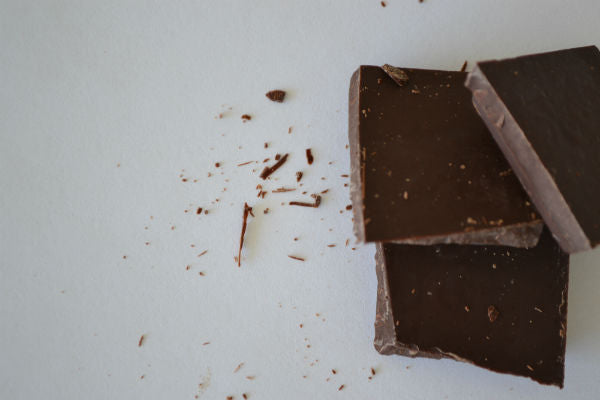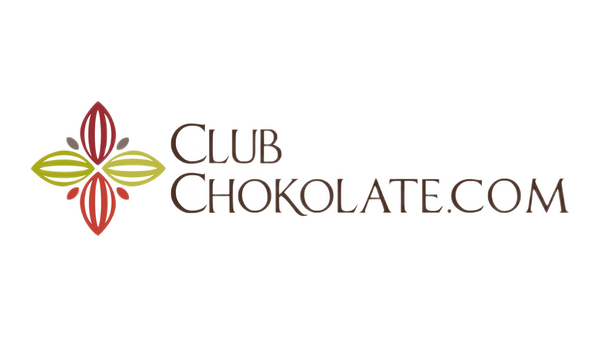
Dark Chocolate Glossary by Club ChoKolate
-
Bean-to-bar
A term used to identify the artisan or craft method to prepare the chocolate. The chocolate maker acquires the cacao beans, as opposed to buying couverture, minimally process them in his or her facility and makes chocolate. It provides a more controlled environment for the chocolate-making process.
Cacao
It is the name of the tree, as well as the seed used to make chocolate. This word is thought to have originated from "kakaw" or "cacáhua" which the natives of Central and South America used when referring to both, the cacao beans and the tree.
Cacao Bean
The seed inside the cacao pod. Initially covered by a whitish rich pulp or "meat," but then brownish after fermentation and drying. It contains the "gold" to make chocolate.
Cacao Butter
It is the fatty aspect of the cacao bean separated during the pressing process. It has a melting point within the human body temperature reason why chocolate melts in our hands or mouth but can stay unmelted at mild room temperatures.
Cacao Mass
Also referred to as "cacao liquor" or "cacao paste" is the solid portion of the cacao bean after pressing it.
Cacao Pod
It is the oval-shaped fruit that grows directly from the cacao tree's stem. Inside it has the cacao beans which are manipulated to make chocolate eventually.
Chocolate
It is the result of minimally processing two cacao derivatives, cacao solids or paste and cacao butter. Usually, sugar is added. Initially, it was a drink and evolved until it became the solid delicacy that we consume today.
Conching
It is a process unique to chocolate making in which the chocolate ingredients are mixed before tempering. It is a critical part to produce and highlight the chocolate aromas and flavors, as well as sooth the chocolate texture.
Criollo
Criollo cacao is another varietal within the classic groups of cacao. It represents less than 5% of the world's cacao production. It is well-known to produce excellent and complex aromas, but susceptible to diseases as well a low productivity. Criollo strain is one of the unique cacao varieties in more recent genetic studies of Theobroma cacao seeds. "Criollo" means native and it referred to local Venezuelan cacao.
-
Drying
After fermentation, it comes the drying, which prevents the growth of mold, but at the same time, allows optimal preservation during transport and storage. There are two type of drying, natural (outdoor and sun-exposed) and artificial (mechanical heaters within warehouse-like structures).
Forastero
Forastero is one of the three cacao varietals within the original classification. It represents approximately 70% of the world's cacao production. It tends to be resistant to diseases and of high productivity; however, it usually has lower quality when compared to other varieties.
Midge
Small insect from the fly family, smaller than a mosquito. It is abundant in the tropics and is in charge of cacao tree's pollination. Without them, there is no chocolate.
Nacional
Cacao varietal usually linked to Ecuador but exists in other Andean regions like Perú. It has similar features and qualities to Criollo and Amazon cacaos, but genetic studies have confirmed that is a single unique variety.
Pollination
It is the process through which pollen is taken from the male to the female part of a plant within the flower, resulting in fertilization. Subsequently, in the case of cacao, it generates a fruit, the cacao pod.
Pressing
The process through which the hard and fatty part of the cacao bean is separated.
-
Seeds
Unit of reproduction of a plant which can then developed in another such a plant. In the case of chocolate, this tree is Theobroma Cacao, and it is used to make chocolate.
Shelling
It is the process through which the shell and the core of the cacao seed are separated after the drying and roasting.
Specialty chocolate maker
A bean to bar chocolate maker working with mostly specialty cacao and using less than or equal to 200 metric tons of cacao annually.*
Specialty chocolate manufacturer
A bean to bar chocolate manufacturer working with mostly specialty cacao and using more than 200 metric tons of cacao annually.*
*Martin, Carla, “Sizing the craft chocolate market,” Fine Cacao and Chocolate Institute (blog), August 31, 2017, https://chocolateinstitute.org/blog/sizing-the-craft-chocolate-market/
Tempering
It is the phase in which chocolate is exposed to heat and cold temperatures, at precise levels selected by the chocolate maker, with the purpose of reaching a uniform, consistent, glossy and evenly colored chocolate bar. A well-tempered chocolate bar will have a clear "snap" when breaking it.
Theobroma Cacao
It's the scientific name that was given to Cacao by the Swedish botanist Caroli Linnæi in its book "Species Plantarum" in 1753. Theobroma's Greek roots mean "food of the gods."
Trinitario
The third cacao varietal from the classic group. It is thought to represent approximately 25% of the world's cacao production. It is a hybrid between "Criollo" and "Forastero" that possibly occurred when cacao beans were transported in and out of Venezuela through Trinidad Island towards the north-east area of South America.
Winnow
It refers to the process of exposing the cacao beans to a current of air to help separate the shell from the core.






